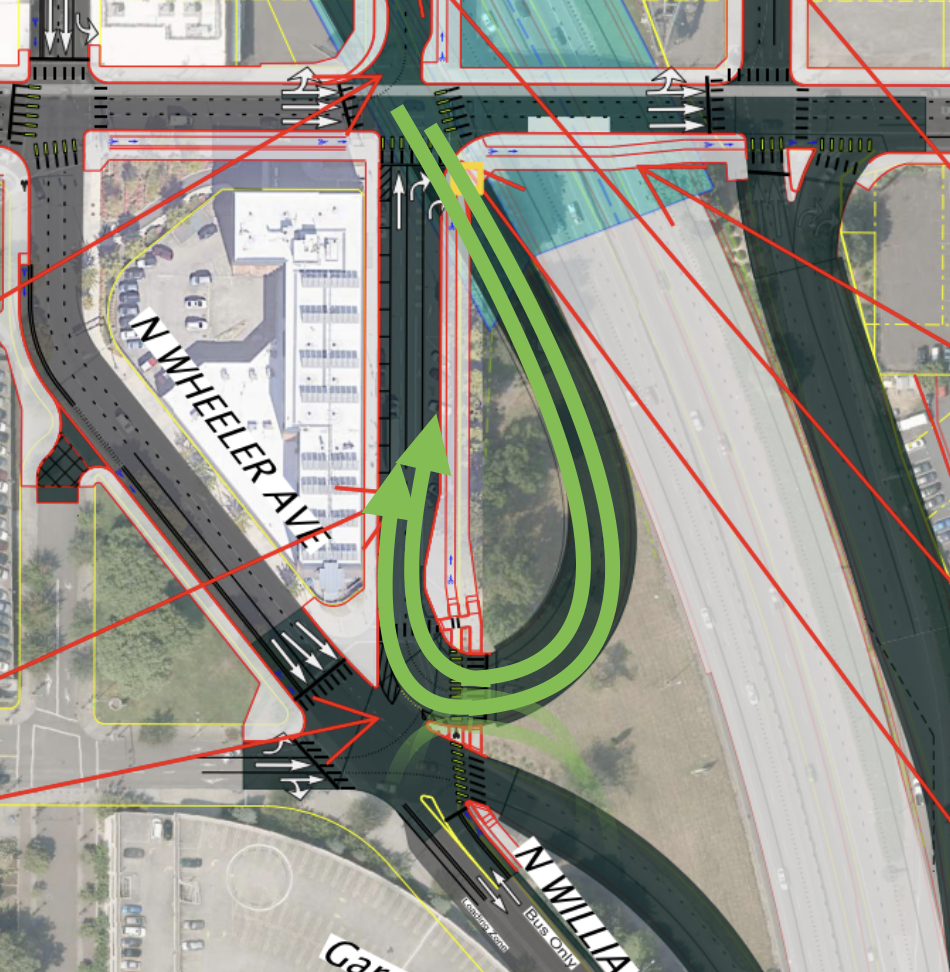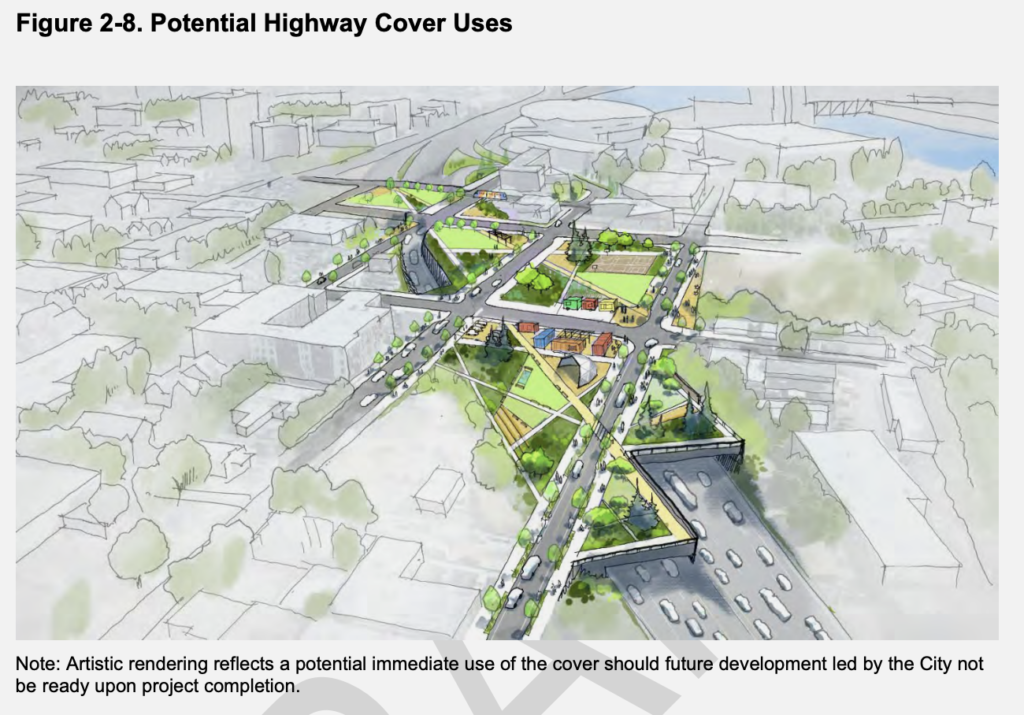What City Observatory did this week
The Rose Quarter’s Big U-Turn: Deadman’s Curve? The redesign of the I-5 Rose Quarter project creates a hazardous new hairpin off-ramp from Interstate 5. This supposed “safety” project may really creating a new “Deadman’s Curve” at the Moda Center. A key part of the project’s re-design is moving an off-ramp about a quarter mile south, but in doing so, the route now requires southbound freeway traffic to do a 180 degree (really 210 degree) turn and travel Northbound on local streets before connecting to arterials that lead to other destinations. In addition to more vehicle travel and circuitous routing, the new hairpin off-ramp creates hazards for those not traveling in cars.
For example, bike riders on Portland’s North Williams bikeway—one of the city’s busiest—will have to negotiate two back-to-back freeway ramps that carry more than 20,000 cars per day. The $1.45 billion highway widening is advertised as a “safety” project, but it’s likely to make this part of Northeast Portland more dangerous for many travelers.
ODOT reneges on Rose Quarter cover promises. In the 1950s, 1960s and 1970s, the Oregon Department of Transportation built three highways through Portland’s predominantly Black Albina neighborhood, destroying hundreds of homes and leading catastrophic population loss. Now ODOT is back promising that a freeway widening project will somehow repair this damage because it will include “capping” 3 blocks or so over the freeway. The caps have been advertised as way to heal the neighborhood, but the project’s recently released Supplemental Environmental Impact Statement shows the agency is reneging on its glib sales pitch.
It trumpeted “highway covers” as a development opportunity, falsely portraying them as being covered in buildings and housing—something the agency has no plans or funds to provide. The covers may be only partially buildable, suitable only for “lightweight” buildings, and face huge constraints. ODOT will declare the project “complete” as soon as it does some “temporary” landscaping. The covers will likely be vacant for years, unless somebody—not ODOT—pays to build on them. ODOT isn’t contributing a dime to build housing to replace what it destroyed, and its proposed covers are unlikely to ever become housing because they’re too expensive and unattractive to develop.
In the News
Bike Portland featured City Observatory’s analysis of the I-5 Rose Quarter project in its story on the release of the Oregon Department of Transportation’s Supplemental Environmental Impact Statement. The public will have until January 4, to provide comments; It appears ODOT has strategically timed the comment period to overlap the holidays to squelch public input on the project.
The Week Observed, and our regular features (Must Read and New Knowledge) will return in December. Happy Thanksgiving to all.



